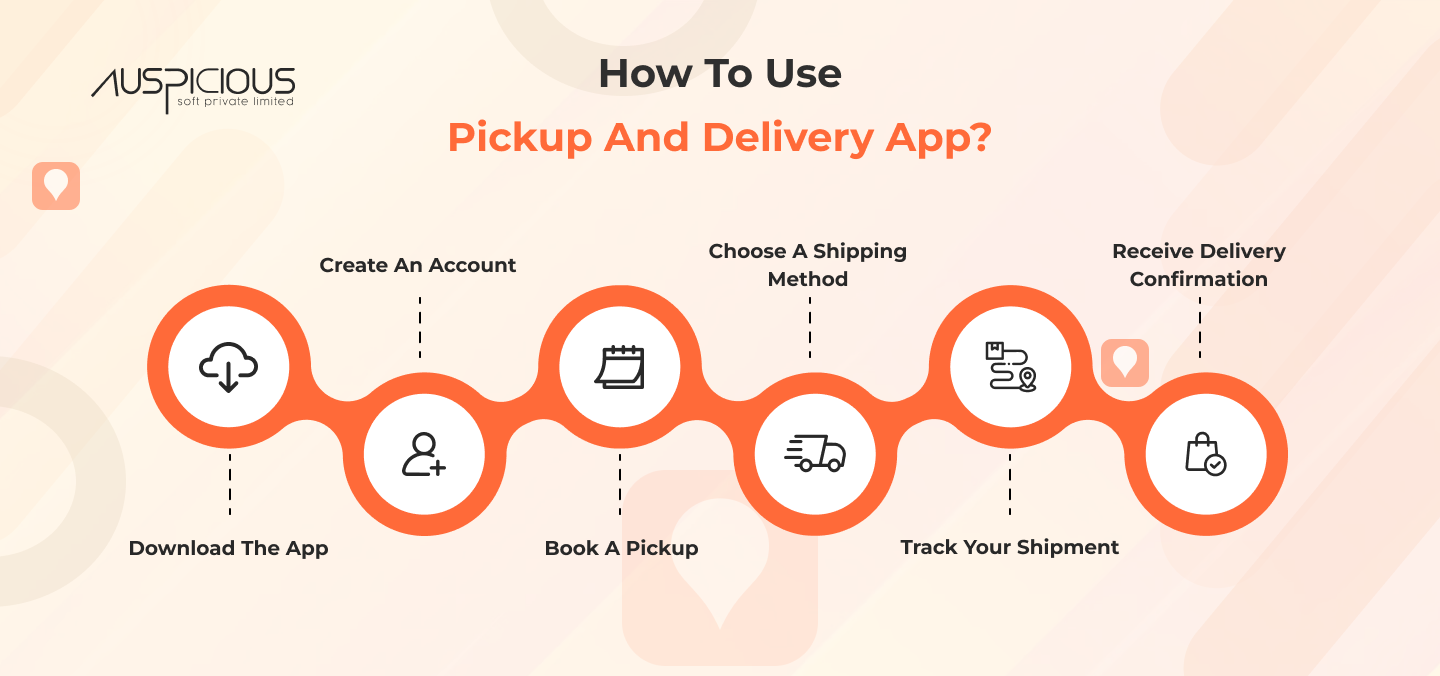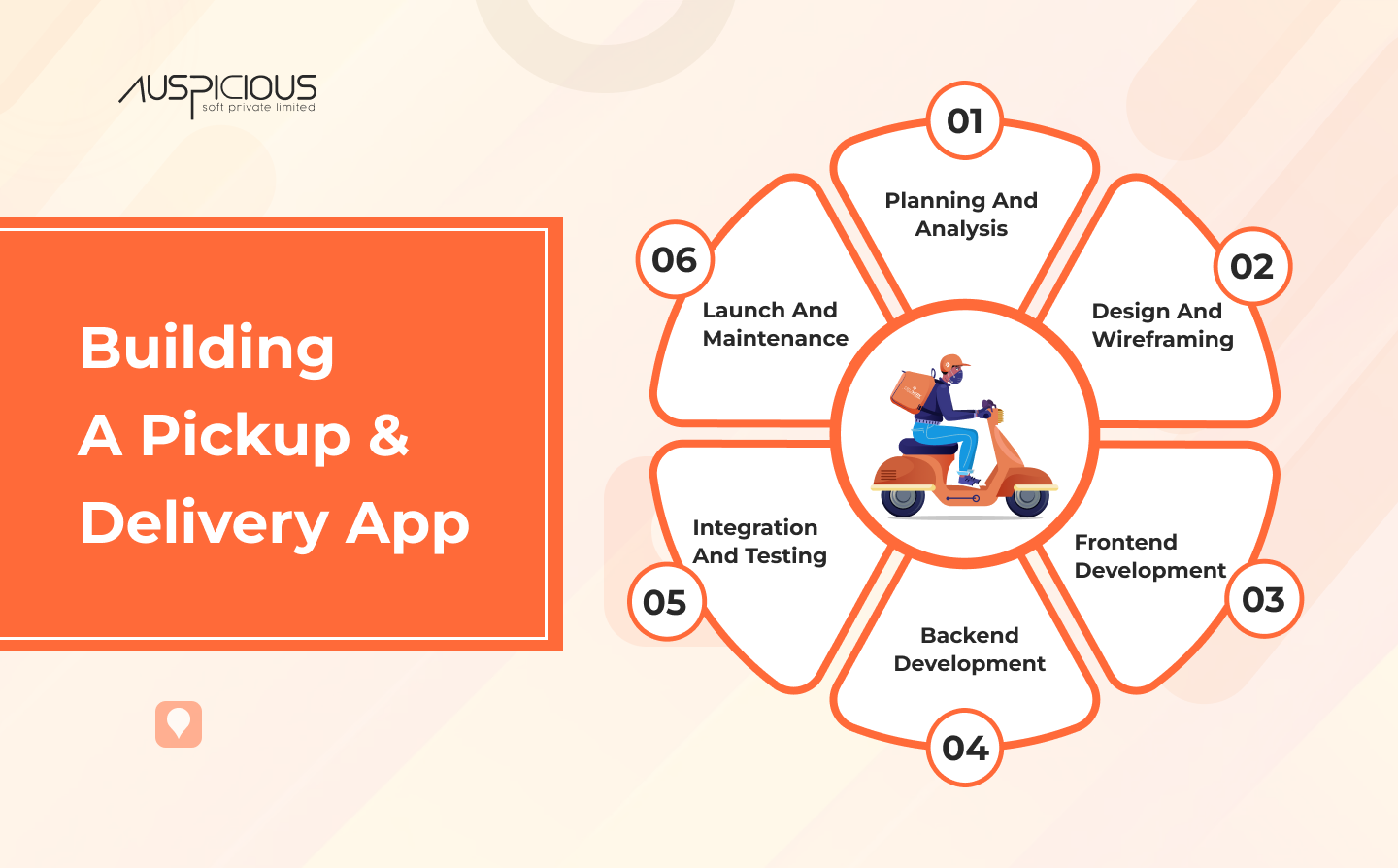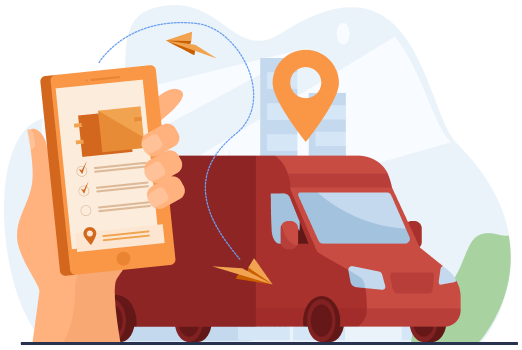How Much Does It Cost To Build A Pickup And Delivery App Like Fetchr?
In today’s fast-paced world, convenience is key. With the rise of e-commerce and online shopping, consumers have become accustomed to having items delivered right to their doorstep. Pickup and delivery apps have become increasingly popular in recent years, allowing consumers to easily request the pickup and delivery of their goods. One such app is Fetchr, a Dubai-based logistics company that provides on-demand delivery and pickup services. In this article, we’ll explore the process of building a pickup and delivery app like Fetchr, as well as the factors that can affect the cost of development.

What Is A Pickup And Delivery App?
A Pickup and Delivery App is a type of on-demand mobile application that enables users to request the pickup and delivery of goods, packages, or other items from one location to another. These apps typically connect businesses or individuals who need items delivered with a network of delivery service providers, such as couriers or drivers.
Through a pickup and delivery app, users can input information about their pickup and delivery requirements, including the item description, pickup and delivery locations, and preferred delivery time. The app will then match the user with an available delivery provider who can fulfill the request.
Pickup and delivery apps have become increasingly popular in recent years, particularly with the rise of e-commerce and the demand for fast and convenient delivery services. These apps provide a more efficient and cost-effective solution for businesses and consumers who need to transport goods over short or long distances.
How To Use A Pickup And Delivery App?
With the advent of technology and smartphones, pickup and delivery apps have revolutionized the way people send and receive goods. These apps allow users to book a pickup, track their shipment, and receive updates on its delivery status in real-time. If you’re new to using a pickup and delivery app, this guide will provide you with a step-by-step process on how to use one.
Step 1: Download the App
The first step is to download the app on your smartphone. You can find pickup and delivery apps on both the App Store and Google Play. Search for the app you want to use and download it onto your phone.
Step 2: Create an Account
Once you’ve downloaded the pickup and delivery app, the next step is to create your account. You will need to provide some basic information, such as your name, email address, and phone number. Some apps also require you to provide your address for pickup and delivery purposes.
Step 3: Book a Pickup
After creating an account, you can book a pickup through the app. You will need to select the type of shipment you want to send, its weight and dimensions, and the pickup and delivery addresses. You may also be able to choose a pickup time and date that is convenient for you.
Step 4: Choose a Shipping Method
Depending on the app and the type of shipment, you may be able to choose from various shipping methods, such as express shipping or standard shipping. The cost and delivery time will depend on the method you select.
Step 5: Track Your Shipment
Once your shipment has been picked up, you can track it in real-time using the app. You will be able to see the status of your shipment, including when it is in transit and when it has been delivered.
Step 6: Receive Delivery Confirmation
When your shipment has been delivered, you will receive a confirmation through the app. You may also be able to rate your experience and provide feedback on the app’s performance.

Tips For Using A Pickup And Delivery App:
● Ensure that you provide accurate information during the booking process to avoid any delays or additional fees.
● Check the app’s shipping policies and terms and conditions before using it to avoid any surprises.
● Use the app’s tracking feature to stay updated on your shipment’s status and ensure that you are available to receive it when it arrives.
The Importance of Pickup and Delivery Apps
Pickup and delivery apps have become increasingly popular in recent years due to the many benefits they offer to both businesses and consumers. In this section, we will discuss the importance of pickup and delivery apps in more detail, highlighting the key benefits they provide.
1. Convenience and Accessibility
One of the primary benefits of pickup and delivery apps is their convenience and accessibility. Users can request delivery services from anywhere, at any time, and track their delivery in real-time. This makes it easier and more convenient for businesses and consumers to transport goods and packages without having to leave their homes or offices.
2. Speed and Efficiency
Pickup and delivery apps also offer significant speed and efficiency benefits. With real-time tracking and status updates, users can monitor the progress of their delivery and receive estimated delivery times. This enables businesses and consumers to receive and transport goods faster and more efficiently than traditional delivery methods.
3. Cost-Effective
Pickup and delivery apps can also be more cost-effective than traditional delivery methods. By leveraging a network of delivery providers, these apps can offer competitive pricing and optimize delivery routes to reduce costs. This makes it more affordable for businesses and consumers to transport goods over short or long distances.
4. Increased Productivity and Sales
Pickup and delivery apps can also increase productivity and sales for businesses by enabling them to focus on their core operations and reduce the time and resources required for delivery. By outsourcing delivery to a pickup and delivery app, businesses can free up valuable resources and focus on other areas of their business.
5. Better Customer Service
Finally, pickup and delivery apps can improve customer service by providing users with real-time tracking, status updates, and quick delivery times. This can help businesses build trust and loyalty with their customers, as well as differentiate themselves from competitors who do not offer these types of services.
The Procedure Of Building A Pickup And Delivery App
The process of building a pickup and delivery application involves several steps, from planning and design to development and testing. In this section, we will discuss the procedure of building a pickup and delivery application in more detail.
1. Planning and Analysis
The first step in building a pickup and delivery application is planning and analysis. This involves defining the scope of the project, identifying the target audience and business goals, and analyzing the competition. During this stage, it is important to gather requirements and create a detailed project plan.
2. Design and Wireframing
The second step is designing the application and creating wireframes. This involves creating a visual representation of the application and its features, such as the user interface, user flow, and overall layout. Wireframing is an important step in the development process as it helps to identify potential design issues and ensure that the application is user-friendly.
3. Front-End Development
Once the wireframes have been created, the next step is front-end development. This involves creating the user interface and developing the application’s visual components, such as buttons, forms, and navigation. During this stage, it is important to ensure that the application is responsive and compatible with different devices and platforms.
4. Back-End Development
The fourth step is back-end development. This involves creating the server-side code that powers the application, such as the database, API, and other functionality. During this stage, it is important to ensure that the application is secure and scalable.
5. Integration and Testing
The fifth step is integration and testing. This involves integrating the front-end and back-end components of the application and testing it to ensure that it functions properly. During this stage, it is important to perform user testing and identify and fix any bugs or issues.
6. Launch and Maintenance
The final step is launching the application and providing ongoing maintenance and support. This involves deploying the application to the app store or other distribution channels, monitoring its performance, and providing updates and maintenance as needed.

What Are The Factors That Affect The Cost Of Building A Pickup And Delivery App?
The cost of building a pickup and delivery app can vary greatly depending on a number of factors. In this section, we will discuss the key factors that can affect the cost of building a pickup and delivery app in more detail.
1. Features and Functionality
The features and functionality of the app are the primary drivers of the cost. The more features and functionality an app has, the more time and effort it will take to develop, which in turn increases the cost. For example, features like GPS tracking, real-time notifications, payment integration, and user reviews can all add to the complexity and cost of the app.
2. Platform and Device Compatibility
The cost of building a pickup and delivery app also depends on the platform and device compatibility. The app may need to be compatible with both iOS and Android devices, which can increase the development time and cost. Additionally, the app may need to be optimized for different screen sizes and resolutions, which can add to the complexity and cost.
3. User Interface and Design
The user interface (UI) and design of the app can also affect the cost. A well-designed UI that is intuitive and easy to use can greatly enhance the user experience, but designing such an interface requires specialized skills and can be time-consuming. Therefore, the cost of building a pickup and delivery app can increase if a lot of time is spent on the UI and design.
4. Technology Stack
The technology stack used to build the app can also affect the cost. A more complex technology stack may require more expertise and time to develop, which can increase the cost. Similarly, the cost may be higher if the app requires the use of advanced technologies, such as machine learning or artificial intelligence.
5. Geographic Location
The geographic location of the development team can also affect the cost. The cost of hiring developers can vary depending on the location, with developers in certain regions charging higher rates. Therefore, the cost of building a pickup and delivery app can be affected by the location of the development team.
6. Testing and Quality Assurance
Testing and quality assurance are essential to ensure that the app is functioning properly and meets the needs of users. The cost of building a pickup and delivery app can increase if a lot of time is spent on testing and quality assurance to ensure that the app is reliable and free of bugs.
How Much Does It Cost to Build An App?
The cost to build an app can vary depending on several factors, including the features, complexity, design, and development team. Here is a breakdown of the approximate costs at every step of building a pickup and delivery app:
1. Planning and Analysis Stage:
During this stage, you’ll need to analyze the market and identify the target audience, as well as develop a business plan and requirements for the app. This stage typically takes 1-2 weeks to complete and can cost between $1,000 to $5,000.
2. Design Stage:
The design stage is essential to ensure that the app is easy to use and visually appealing. This stage includes creating wireframes, prototypes, and visual design. The cost for this stage can range from $5,000 to $15,000 depending on the complexity of the design and the experience of the design team.
3. Front-end Development:
The front-end development stage involves coding the user interface of the app. The cost for this stage can range from $10,000 to $30,000 depending on the complexity of the design and the experience of the development team.
4. Back-end Development:
The back-end development stage involves building the server-side components of the app, including databases, APIs, and server infrastructure. The cost for this stage can range from $20,000 to $50,000 depending on the complexity of the infrastructure and the experience of the development team.
5. Testing and Quality Assurance:
Testing and quality assurance is essential to ensure that the app is functioning properly and meets the needs of users. This stage can cost between $5,000 to $15,000, depending on the amount of testing required and the experience of the quality assurance team.
6. Deployment and Maintenance:
The deployment and maintenance stage involves launching the app to the app stores and providing ongoing maintenance and updates. This stage can cost between $10,000 to $20,000 depending on the frequency of updates and maintenance required.
In summary, the total cost of building a pickup and delivery app can range from $51,000 to $135,000, depending on the complexity of the app and the experience of the development team. However, it’s important to note that these costs are estimates and can vary depending on the specific requirements of the app and the development team selected.
It’s important to carefully consider each stage of the app development process and work with a reputable development team to ensure that the app is built efficiently and cost-effectively. Additionally, it’s important to set a realistic budget and to plan for unexpected costs that may arise during the development process.

How To Choose An On-Demand Mobile App Development Company?
Choosing the right on-demand mobile app development company is critical to the success of your pickup and delivery app. Here are some key factors to consider when choosing an on-demand mobile app development company:
1. Experience and Expertise
One of the most important factors to consider when choosing an on-demand mobile app development company is their experience and expertise. Look for companies that have a proven track record of success in developing on-demand mobile apps. A company with extensive experience in developing apps similar to yours will be able to provide valuable insights and suggestions, as well as identify potential issues and risks early on in the development process.
2. Technical Proficiency
It’s important to choose a company that is technically proficient and has the expertise to develop your app using the latest technologies and tools. This includes knowledge of programming languages, database management, server infrastructure, and mobile app development platforms.
3. Quality Assurance
Quality assurance is an essential part of app development to ensure that the app is functioning properly and meets the needs of the users. Look for a company that has a robust quality assurance process in place to test the app thoroughly before launch. Additionally, ensure that the company provides ongoing maintenance and support after the app has been launched.
4. Client Reviews and References
Client reviews and references are an excellent way to gauge the performance and reputation of an on-demand mobile app development company. Look for companies that have positive reviews and feedback from past clients, and be sure to ask for references to speak directly with their clients to get a better understanding of their experience working with the company.
5. Communication and Collaboration
Communication and collaboration are critical to the success of the app development process. Look for a company that has a transparent communication process and is responsive to your needs and concerns. Additionally, ensure that the company is willing to collaborate with you throughout the app development process, taking into consideration your feedback and suggestions.
6. Cost and Budget
The cost of developing an on-demand mobile app can vary significantly depending on the complexity of the app and the experience of the development team. It’s important to set a realistic budget and to choose a company that can provide high-quality development services within your budget.
Final Words
In conclusion, the demand for on-demand pickup and delivery apps is increasing day by day. Such apps have revolutionized the way people send and receive goods. Building a pickup and delivery app like Fetchr can be an excellent opportunity for entrepreneurs to enter into this market and capitalize on its growth potential. However, building such an app is a complex process that involves many different factors, and the cost can vary depending on the development company’s expertise, features, and customization required.

TABLE OF CONTENT
- How Much Does It Cost To Build A Pickup And Delivery App Like Fetchr?
- What Is A Pickup And Delivery App?
- How To Use A Pickup And Delivery App?
- The Importance of Pickup and Delivery Apps
- The Procedure Of Building A Pickup And Delivery App
- What Are The Factors That Affect The Cost Of Building A Pickup And Delivery App?
- How Much Does It Cost to Build An App?
- How To Choose An On-Demand Mobile App Development Company?
- Final Words
